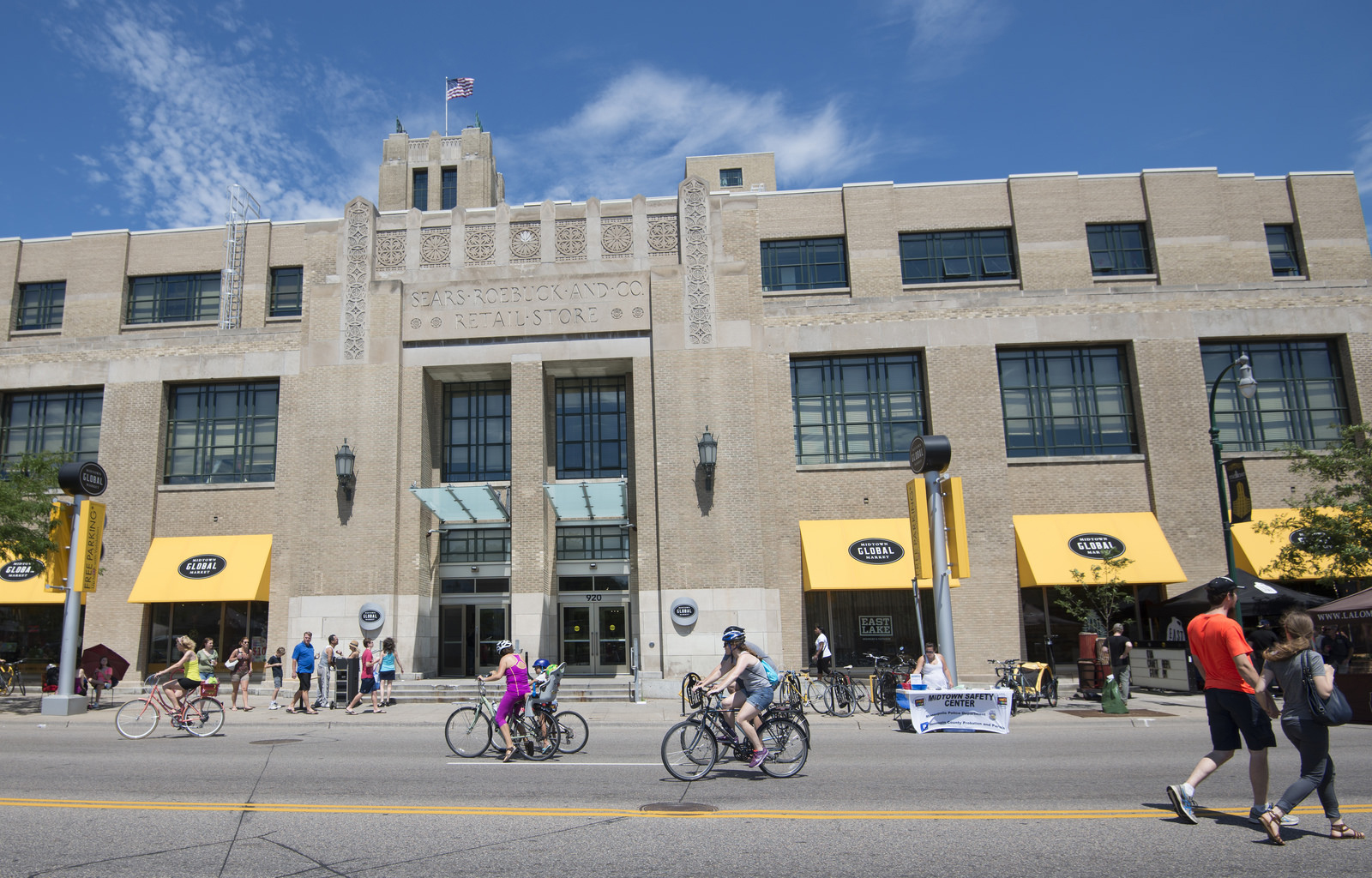7. History and culture: In 2040, the physical attributes of Minneapolis will reflect the city’s history and cultures.

Minneapolis is filled with buildings and landscapes that are important to its heritage and integral to defining and framing the character of the city’s place and culture. These properties may be a collection of commercial buildings or industrial buildings, old railroad infrastructure or a set of rowhomes. Some may be local or national historically designated properties, while many are not. The value of some may be more universally recognized – for example, the Foshay Tower; while the value of others may not be as universally recognized – for example, early 20th century commercial buildings along West Broadway. In either case, the properties have intrinsic value in helping define and frame the character of an area and present opportunities to support economic and business development and, more broadly, community development and investment.
Minneapolis has been experiencing change since its early settlement and will continue to experience change well into the future. It’s essential to manage this change and evolution so the physical attributes of the city reflect Minneapolis’ history and cultures and all residents have a sense of belonging and access to a cultural anchor. Preservation can not only celebrate who has lived in the city in the past, but also reflect who lives here today. The City can accomplish this only through proactive engagement with residents, business owners, and property owners, especially those from communities of color and indigenous and low-income communities who have not typically participated in heritage preservation activities or other city activities.
To achieve the goal of having physical attributes that reflect its history and culture, the City of Minneapolis will broaden its understanding of important places through engagement with cultural communities, communities of color and indigenous communities. The City will use the feedback from this engagement to help identify and preserve buildings, landscapes and other places important to the city’s heritage. Additionally, the City will recognize and actively promote the intrinsic value of historic places as integral to the city’s evolving environment and will support thriving business districts and corridors that build on cultural assets.
 Policies
Policies
11 Policies relate to this goal. Click on a policy below to learn more about it.
Heritage Preservation Outreach
POLICY 91
Identify and Evaluate Historic Resources
POLICY 92
Intrinsic Value of Properties
POLICY 60
Stewarding Historic Properties
POLICY 93
Heritage Preservation Regulation
POLICY 94
Heritage Preservation Financial Incentives
POLICY 95
Cultural Heritage and Preservation Recognition
POLICY 96
Business Districts and Corridors
POLICY 58
Public Realm
POLICY 7
Quality of Life
POLICY 53
Cultural Districts
POLICY 34

